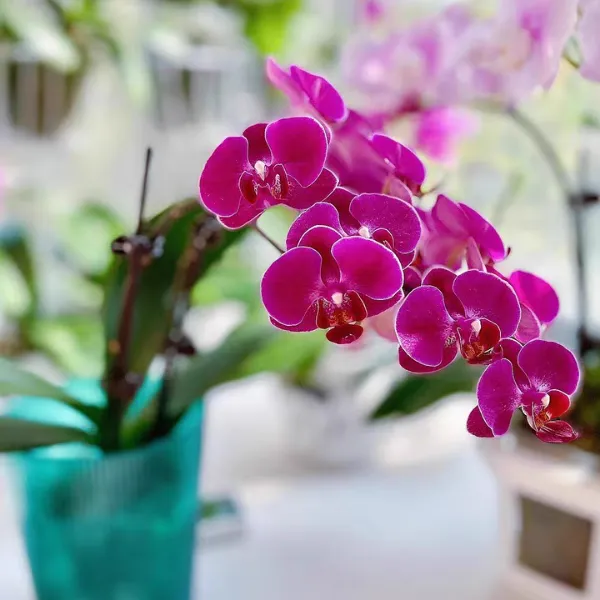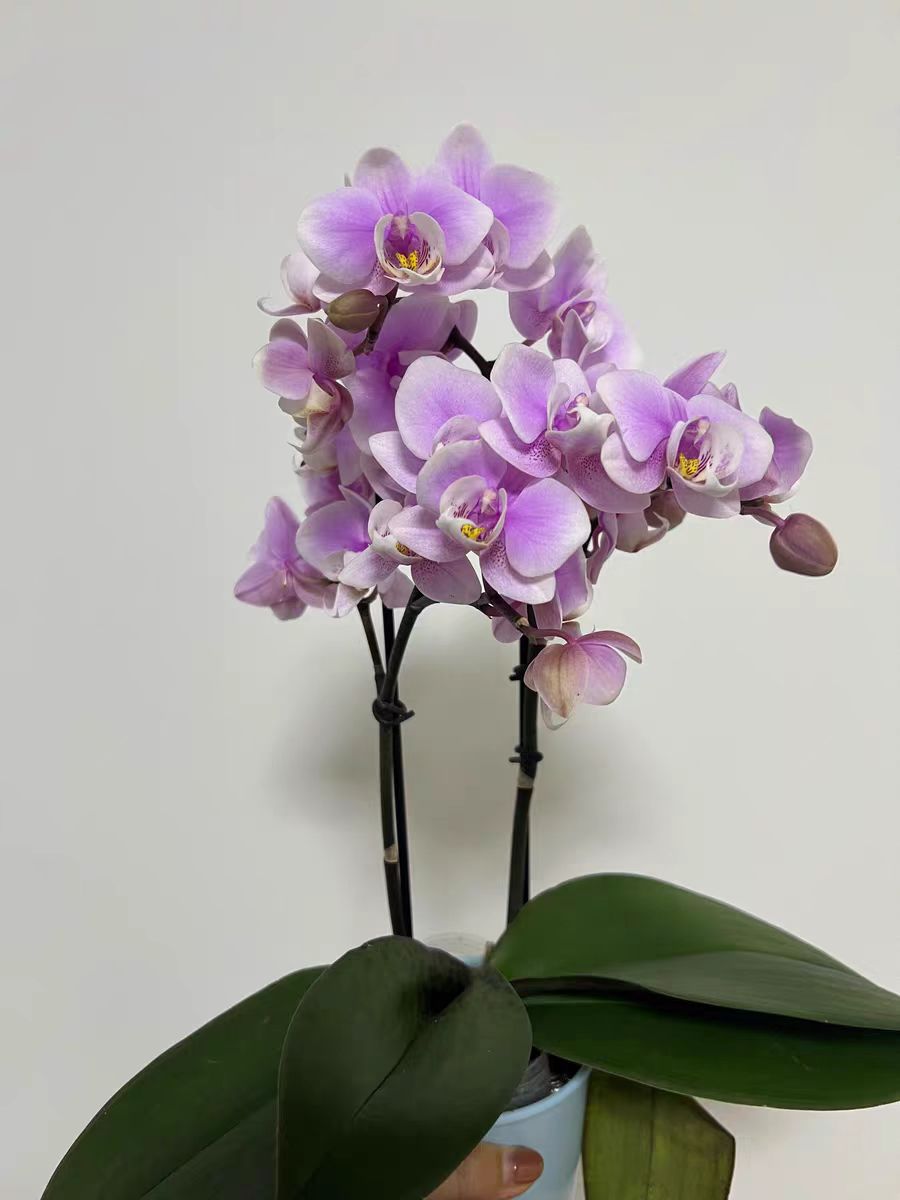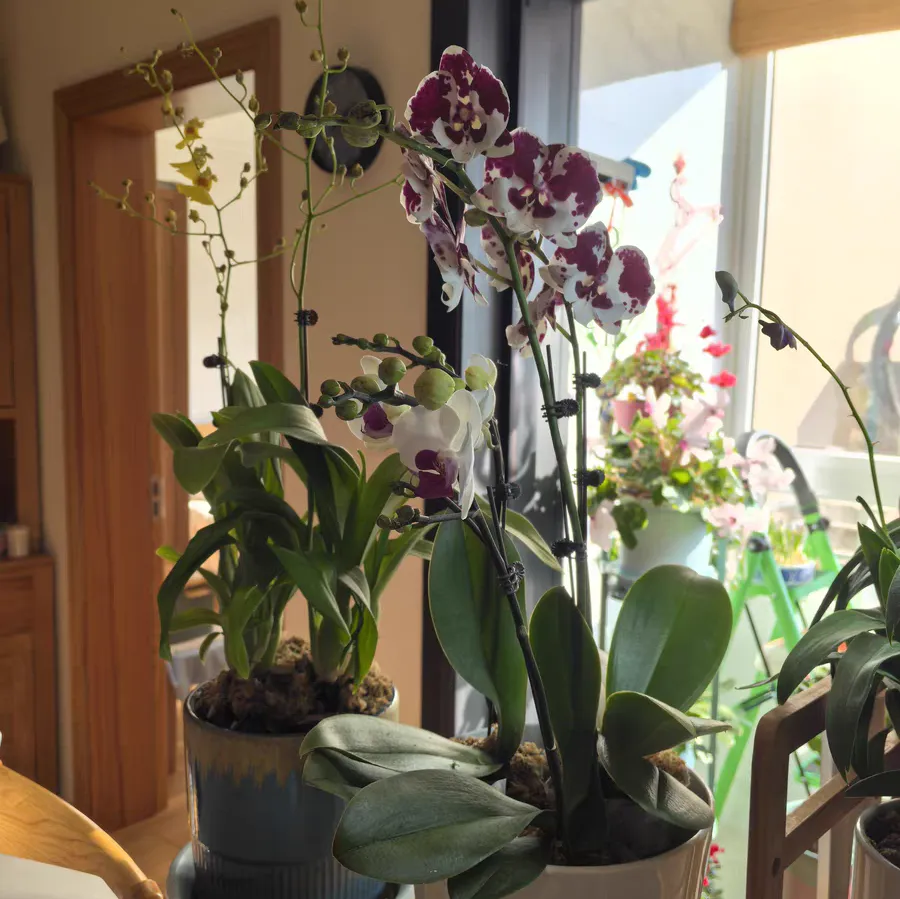Phalaenopsis, with its elegant postures and gorgeous flower colors, is a popular indoor flower. Many flower enthusiasts look forward to its reblooming as soon as possible to continue bringing beauty. Correct pruning is the key to achieving this goal. By mastering the techniques, you can make the Phalaenopsis regain vitality quickly and bloom again. After the flowers wither, the first thing to do is to prune the withered flowers. Use a disinfected and sharp pair of scissors to cut the flower stem at the 2nd - 3rd internode counted from the base of the flower stem. It is important to keep these nodes as they are the crucial parts for the growth of new flower stems. If the flower stem has completely withered, cut it directly from the base to avoid wasting nutrients. After pruning the flower stem, conduct a comprehensive inspection of the plant. Check if there are yellow, withered, or diseased leaves, and cut them off in a timely manner if found. Yellow and withered leaves not only affect the appearance but also consume the plant's nutrients. If diseased leaves are not treated promptly, they may spread diseases and endanger the entire Phalaenopsis plant. When pruning, make sure to cut from the base of the leaf to ensure a smooth cut. After the initial pruning, appropriately adjusting the maintenance environment can make the Phalaenopsis rebloom faster. Phalaenopsis likes bright, diffused light. Place it in a well - lit place indoors where there is no direct sunlight, such as near the window in the living room. The temperature is preferably maintained between 18 - 28°C. When the temperature exceeds 30°C in summer, take cooling measures like turning on the air - conditioner or fan. When the temperature is below 15°C in winter, pay attention to keeping warm, and you can cover it with plastic film for insulation. Reasonable fertilization is also essential. One to two weeks after pruning, apply a thin layer of nitrogen - based fertilizer to promote the growth of new leaves and roots. Apply it once every 10 - 15 days. After the plant grows new leaves, switch to a fertilizer mainly composed of phosphorus and potassium, such as potassium dihydrogen phosphate, diluted to a 1000 - 1500 - fold solution. Spray it on the leaves or irrigate the roots once every 2 - 3 weeks, which can effectively promote flower - bud differentiation. Watering should follow the principle of "watering when the soil is dry and soaking thoroughly". Insert your finger 2 - 3 centimeters into the substrate. If it feels dry, water it, and water thoroughly to avoid waterlogging, which can cause root rot. Generally, water once or twice a week in spring and autumn, once every 2 - 3 days in summer, and once every 1 - 2 weeks in winter. At the same time, maintain the air humidity at 60% - 80%, which can be achieved by spraying water around the plant or using a humidifier. Through scientific pruning, combined with appropriate lighting, temperature, fertilization, and watering, the Phalaenopsis can rebloom faster. Although the process requires patience, when you see it bloom brightly again, all your efforts will be worthwhile. Enjoy the beauty brought by the Phalaenopsis to your heart's content.
How to Prune Phalaenopsis to Make It Bloom a Second Time?

Share with
Tagged in :




Leave a Reply